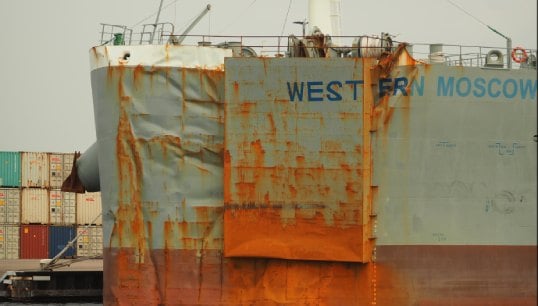Lawyers say prompt action needed to avoid collisions after landmark Singapore Straits case
15 June 2022

Lawyers have warned seafarers of the need to take prompt action to avoid collisions following an ‘unhelpful’ landmark Admiralty Court case to determine responsibility for a costly crash in the Singapore Straits in 2019.
The judgment is the first in which the Admiralty Court has ruled on the liability for an accident in a ‘precautionary area’ of a traffic separation scheme – an area where ships are required to navigate with particular caution due to the presence of vessels crossing -- and relates to a collision between the LNG carrier Wilforce and the bulk carrier Western Moscow, which was on its maiden voyage.
Combined claims for the damage caused by the collision are estimated to be around £14m and judge Sir Nigel Teare, advised by two nautical specialists, ruled that the 39,300dwt Western Moscow was 75% to blame for the incident.
Lawyers for the Western Moscow’s owners argued that the Norwegian-flagged Wilforce was the give-way vessel and should take the bulk of the blame. They claimed the Philippines-flagged bulker had complied with the colregs for stand-on vessels by maintaining its course and speed while manoeuvring to avoid a tug and its tow.
But counsel for the LNG carrier’s owners contended that the crossing rule did not apply because the bulk carrier had created the crossing situation. They suggested the conduct of the Western Moscow was so poor that Wilforce should bear no liability at all.
Justice Teare admitted he had found the arguments ‘difficult to resolve’ – especially in the light of a 2021 UK Supreme Court ruling that the crossing rule should apply wherever possible and over-ridden only on the grounds of ‘compelling necessity’.
But his judgment did not resolve the questions on the crossing rule, as it held that the action required of the LNG carrier would have been the same whether it was governed by the crossing rules or the requirements of good seamanship
Justice Teare said both ships ‘had breached an important obligation, the one to keep a good lookout and the other to proceed at a safe speed’. While good seamanship meant that the LNG carrier should have taken early and substantial action to keep clear of the bulker and should not have been travelling so fast in the approach to the precautionary area, the ‘very poor’ lookout on the Western Moscow was ‘particularly blameworthy’ and the vessel had created the risk of collision.
Lawyers from the London-based firm HFW, which acted for the Western Moscow’s owners said the case highlighted the problems with the interpretation of the crossing rules – and especially whether they apply when a stand-on vessel creates a crossing situation by its own fault.
‘Whilst legal practitioners must wait for another case to come before the court in the hope that it will provide further clarity as to the nuanced application of the crossing rules, mariners are best advised to navigate with diligence and take early and substantial action to avoid collision,’ they noted. ‘In our view, drawing subtle distinctions as to when the crossing rules apply is unhelpful and does not assist mariners with the practical application of the collision regulations when navigating at sea.’
More articles
Fond farewells for Nautilus Welfare Fund manager after a decade of dedication
Staff and residents at Mariners' Park have paid a fond farewell to its longstanding welfare manager, Mick Howarth.
Italy to allow extended Schengen visas for yacht crew
The Italian parliament has agreed that yacht crew who are not EU residents will be able to apply for a 365-day visa to remain in the Schengen Area, helping to solve an ongoing issue for yacht workers visiting the country.
MNWB: investing in frontline services
Stuart Rivers describes the Merchant Navy Welfare Board (MNWB) as ‘possibly the greatest charity no-one’s ever heard of’, but has big plans to put it on the map. With a background in the tech industry and a mandate to modernise, there could be some changes ahead for constituent members
